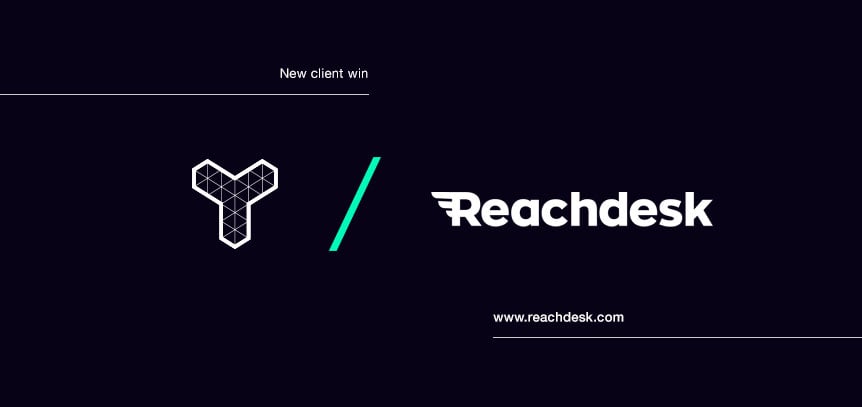
How to Build Brand Advocacy Through Social Media
Get your customers working for you by making the most of social media.

Back in the early days of social media, when everyone was still figuring it out, pioneering brands staked their claims on their pages and that was that. Social media users were inclined to seek them out; ‘liking’ and sharing as appropriate, because the game was new and novel. Fast forward to the present and brands have got to work considerably harder to get the attention of fans, who can be fickle with their brand allegiances.
Creating a strong brand reputation and a thriving social community is the key to fostering brand advocacy among social media users. Here’s how:
Identify your potential advocates
With such huge user numbers at play, ‘knowing your audience’ can seem like a daunting task. However, a wealth of social media monitoring tools can make it easy to identify your average user. Gather data from analytics software, social media accounts, CRM information and email lists and dig deep to determine who your fans are, where they hang out and what they respond to. In a survey of 700 marketers by Infosys, 85% said social media monitoring helped their brand create rapport with fans, and 58% said they saw increased sales as a result. Given these strong figures, it’s surprising that only 38% said they were planning to increase their monitoring in the forthcoming year.
Understand their motivation
Using this data, identify what works – and what doesn’t! Promotions and giveaways might pull in fans in the short term, but what’s going to foster a long term, sustainable relationship? Do fans come to you for humour? Great pictures? Breaking news? Debate? And where the numbers peak, what conversations are taking place? There are no hard and fast rules when it comes to content, but according to MyCleverAgency, the following are good places to start.
Facebook: Be positive, provide a link (use Bitly or TinyURL to keep track of clicks!), include a picture (the perfect size is 800×600) and make sure posts are mobile friendly, as 70% of Facebook users will view them on their phone or tablet.
Twitter: Include a call to action, don’t sacrifice spelling and grammar even though you only have 140 characters, use @ mentions to prompt influencers to engage with you, and leave 20 characters ‘spare’ so others can add thoughts and comments to retweets.
Google+: Use hashtags to increase reach, use images to make your post stand out and get involved with trending topics to improve visibility and show your brand is keeping pace with current events.
Pinterest: Post pictures that have multiple colours (x3 more engagement), a minimal background (busy backgrounds can reduce repins by 50%) and don’t feature human faces (pictures without human faces are shared 23% more than those with them).
Be proactive
It’s all well and good keeping tabs on discussions you’ve started, but people will be talking about you elsewhere, too. Search for your brand name or product on Twitter and see what social users are saying about you there, or check out Facebook pages to see if you’re being mentioned. And don’t forget blogs! Bloggers can be the strongest advocates for a brand – according to Technorati they’re the third most likely online platform to influence a purchase (after retail and brand sites) so get Googling and if you find something, act on it, don’t ignore it.
Build rapport
Treat your brand as a faceless, inanimate entity and you can be sure your fans will too. So be personable and human, talk to your fans and engage with them. Remember, it’s a two way street; simply ‘broadcasting’ is ineffective – fans won’t talk to you if they feel like they’re just shouting into the ether. And yet, according to SocialBakers, 70% of Facebook fans go ignored when they ask a question or comment on a post, completely contradicting the interactive nature and purpose of social networks. Try to respond to at least 65% of queries, and do it in a timely manner – 42% of social media users expect a response within an hour! And if your fans have simply made a comment, rather than asked a question, respond to that, too. A little thanks goes a long way.
Measure!
Building brand advocacy is an ongoing journey which needs to be measured. It’s not enough to identify and understand fans once and then assume your strategy will work indefinitely. After all, audiences evolve and grow. Regular reviews and social media monitoring will tell you what’s working and what’s not, allowing you to organically grow brand advocacy from the ground up.
Takeaways:
- A solid social media monitoring strategy is crucial for understanding your audience.
- Engagement is a two-way street, and you can’t expect fans to talk to you if you don’t reply.
- Look beyond the standard social channels and find conversations about your brand elsewhere – then work them to your advantage.
- Social media monitoring has a tangible engagement and conversion pay-off, but requires consistent attention and review.
The Author |
|
 |
Alistair Norman | Marketing DirectorAlistair is responsible for the strategy, design and implementation of our Inbound and Content Marketing, with a focus on developing B2B and B2C markets. |
Read the latest positioning trends and insights.
Tap into our brand and product positioning, storytelling, and creative expertise to inspire your next strategic move.

